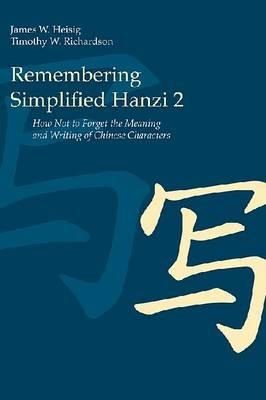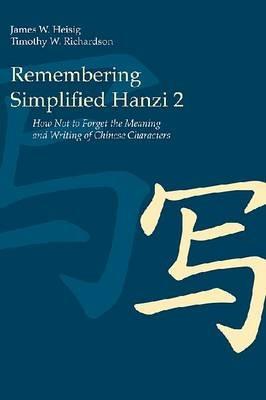L’articolo è stato aggiunto alla lista dei desideri
IBS.it, l'altro eCommerce
Remembering Simplified Hanzi 2: How Not to Forget the Meaning and Writing of Chinese Characters
Cliccando su “Conferma” dichiari che il contenuto da te inserito è conforme alle Condizioni Generali d’Uso del Sito ed alle Linee Guida sui Contenuti Vietati. Puoi rileggere e modificare e successivamente confermare il tuo contenuto. Tra poche ore lo troverai online (in caso contrario verifica la conformità del contenuto alle policy del Sito).
Grazie per la tua recensione!
Tra poche ore la vedrai online (in caso contrario verifica la conformità del testo alle nostre linee guida). Dopo la pubblicazione per te +4 punti



Tutti i formati ed edizioni
Promo attive (0)
This book is the second of two volumes designed to help students learn the meaning and writing of the 3,000 most frequently used simplified Chinese characters. (A parallel set of volumes has been prepared for traditional characters.) The 1,500 characters introduced in Book 1 include the top 1,000 by frequency, plus another 500 best learned at an early stage. Book 2 adds the remaining 1,500 characters to complete the set. The lessons of Book 2 have been arranged in such a way that they may be studied either after those of Book 1 or simultaneously with them. Students who wish to focus initially on the 1,000 most frequently used characters in the language can do so by studying Book 1 before moving on to Book 2. Many, if not most, learners will find this preferable. Students who wish to apply the logical ordering found in these pages to the entire list of 3,000 characters from the very beginning can take the more exacting, but also more rationally satisfying, approach of studying the parallel lessons of the two volumes together. The lessons in this book are followed by two short, additional sections, one that introduces a number of "compounds," or characters that are best learned in pairs, and another that adds two "postscripts." The book also includes a number of comprehensive indexes that are designed to facilitate work with both volumes. Of central importance to the approach found in these pages is the systematic arranging of characters in an order best suited to memory. In the Chinese writing system, strokes and simple components are nested within relatively simple characters. These characters, in turn, can serve as parts of more complicated characters, and so on. Taking advantage of this allows a logical ordering, making it possible for students to approach most new characters with prior knowledge that can greatly facilitate the learning process. Guidance and detailed instructions are provided all along the way. Students are taught to employ "imaginative memory" to associate each character's component parts or "primitive elements" with one another and with a key word that has been carefully selected to represent an important meaning of the character. This is accomplished through creation of a "story" that engagingly ties the primitive elements and key word together. In this way, the collections of dots, strokes and components that make up the characters are associated in memorable ways, dramatically shortening the time required for learning and helping prevent characters from slipping out of memory.
Recensioni pubblicate senza verifica sull'acquisto del prodotto.
E’ il secondo volume del corso per memorizzare i tratti che compongono i caratteri cinesi, a differenza del primo volume, prevede che lo studente sia già scafato, e conosca le tecniche di uso spiegate nel primo volume, in breve le “storie” che illustrano i caratteri sono solo accennate nei casi più difficili, il resto è lasciato al lavoro dello studente. E’ uno splendido libro molto efficace nel raggiungere lo scopo che si prefigge. Dulcis in fundo, alla fine del volume viene presentato il carattere più complicato in assoluto, “biang” composto da ben 57 tratti, compone biangbiang che viene usato per indicare gli spaghetti cinesi.
Recensioni
Recensioni pubblicate senza verifica sull'acquisto del prodotto.
L'articolo è stato aggiunto al carrello
L’articolo è stato aggiunto alla lista dei desideri


